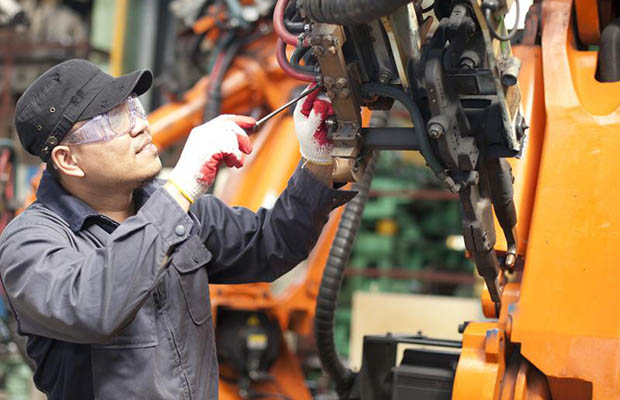

Understanding the Dollar Value of Preventive Maintenance
By Grainger Editorial Staff 1/1/17


A machine or piece of equipment that isn’t working properly isn’t producing, which means potentially lost revenue. While downtime is inevitable for servicing machinery and equipment, consider the financial benefits of planning ahead before it breaks or requires laborious maintenance. Regular preventive maintenance can go a long way to save time and therefore help avoid losing money. Yes, it requires spending a little time and money on routine maintenance checks, but think about the long-term in effectively, safely and efficiently keeping machines and equipment operational. Therefore, the goal is to save the company money through routine maintenance that is preventive instead of reactive, which means a steady output or even increased level of output.
Plant Engineering has examined the financial gains from preventive maintenance in several of their articles. Writing on the site, the Marshall Institute noted the heavy tendency to use the approach of “run to failure” for machinery instead of taking on preventive maintenance1. The run to failure approach means a higher likelihood of shutdowns and lost days of work compared to a more proactive approach with routine preventive maintenance.
Let’s look at the cost differences between reactive and preventive maintenance.
According to a report from McKinsey Global Institute on the Internet of Things, predictive maintenance can lead to a savings of anywhere from $200 billion to $600 billion for manufacturers by 2025.2 Preventive maintenance focuses on identifying potential trouble spots and items for scheduled maintenance well before there is an issue. By comparison, reactive maintenance efforts can lead to unexpected costs for replacement parts and any other affected components related to the machinery. It typically means lost time in order to shut down equipment, be it hours or days, which can lead to a significant financial impact. That impact can involve lost time and money in meeting deadline-sensitive orders, a potential for disrupting customer relations from product delays, a negative effect on reputation with existing and future customers or clients. (Efficient Plant has some guidelines on comparing maintenance costs).3
The Fabricators & Manufacturers Association previously pointed out how businesses often talk about preventive maintenance but may not practice it fully.4 The results of doing versus not doing can lead to labor gains or losses, unexpected inventory costs and rushed production schedules involving safety or quality concerns.
There is a clear distinction between controlled, upfront costs from preventive maintenance compared to unexpected costs and financial losses from reactive maintenance. There is also the possibility of more long-term damage to machinery if not functioning properly through regular, scheduled maintenance. Downtime for one piece of machinery or system can also lead to a negative reaction in your overall supply chain. Having one system not working can create drastic cost increases. This concept applies to both your own products and services, as well as your suppliers and vendors, because if they have assembly line issues, that can also affect your overall process and timing too.
IBM’s blog on The Internet of Things suggests getting the most out of preventive maintenance dollars by keeping a regular schedule for maintenance follow-ups, more of a focus on monitoring assets, more continuous measurement practices, in addition to setting realistic benchmarks to measure against.5 The time and money spent upfront with preventive efforts can lead to much larger rewards over the longer term.
Sources:
3. Efficient Plant. "Comparing Maintenance Costs." Staff. September 2000.
Additional Resources
Anodot. "Predictive Maintenance: What's the Economic Value." Amir Kupervas.
![]()
The information contained in this article is intended for general information purposes only and is based on information available as of the initial date of publication. No representation is made that the information or references are complete or remain current. This article is not a substitute for review of current applicable government regulations, industry standards, or other standards specific to your business and/or activities and should not be construed as legal advice or opinion. Readers with specific questions should refer to the applicable standards or consult with an attorney.






